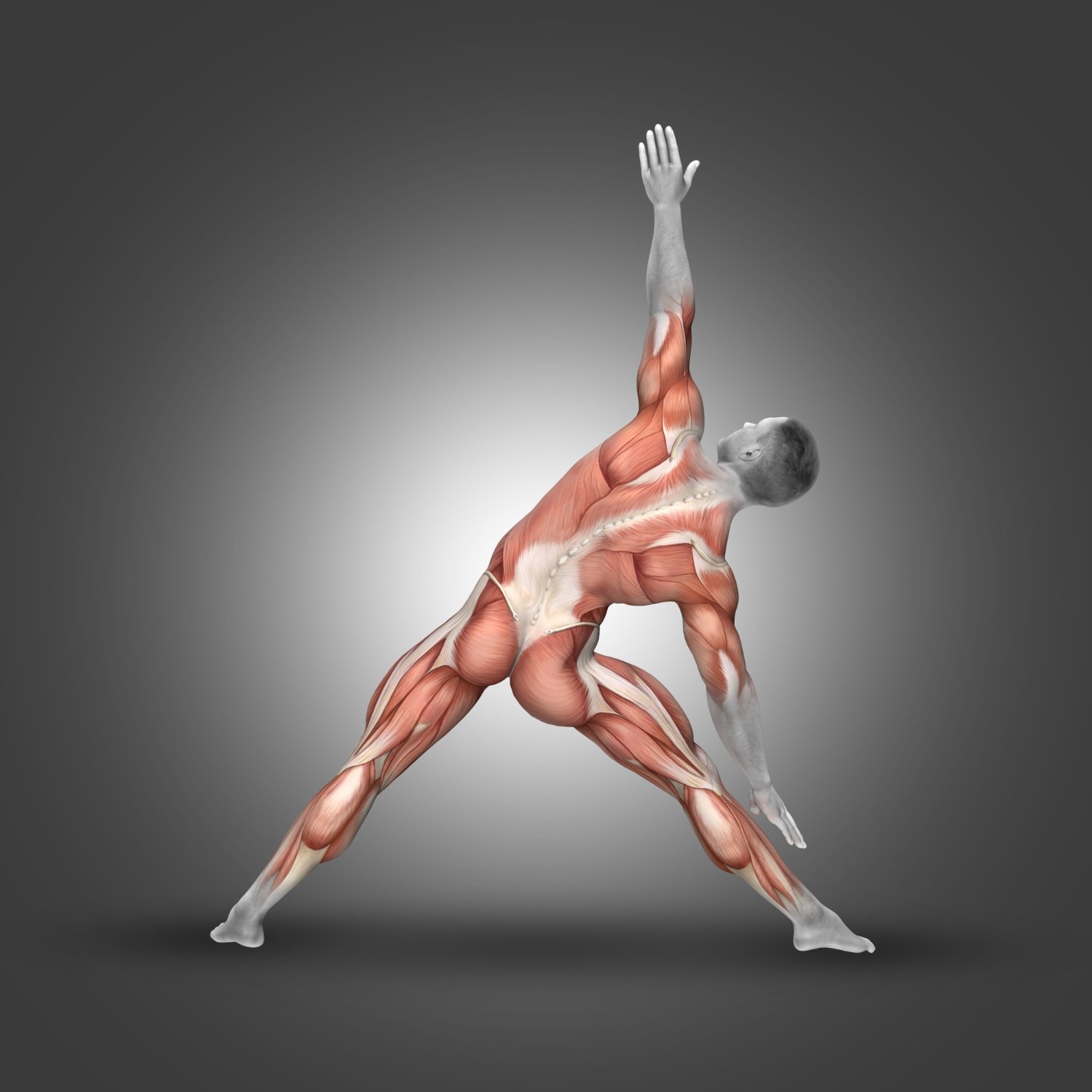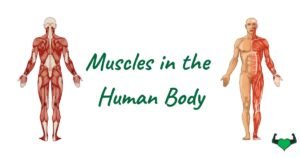This website may contain affiliate links. If you make a purchase through these links, I may earn a commission at no extra cost to you. Thank you for supporting this site.
Introduction
Welcome to our comprehensive guide on hip flexor trigger points! If you’ve ever experienced discomfort or tightness in your hips, you might be familiar with the term “hip flexor trigger point.” These pesky knots in the muscles of your hip flexors can cause a range of issues, from mild discomfort to significant pain and mobility restrictions.
Understanding hip flexor trigger points is crucial for anyone looking to improve their overall health and mobility. In this guide, we’ll delve into what exactly hip flexor trigger points are, why they occur, and most importantly, how to manage them effectively.
Table of Contents
Explanation of hip flexor trigger points
Hip flexor trigger points refer to areas of muscle tightness and tenderness within the hip flexor muscles, which are responsible for bending the hip joint and lifting the leg. These trigger points can develop due to various factors such as overuse, poor posture, or prolonged periods of sitting. When these trigger points become active, they can cause pain, stiffness, and limited range of motion in the hips, affecting daily activities and overall quality of life.
Importance of addressing trigger points for overall health and mobility
Ignoring hip flexor trigger points can lead to worsening symptoms and may contribute to other musculoskeletal issues over time. Addressing these trigger points is essential for maintaining optimal hip function, mobility, and preventing further discomfort or injury. By understanding how to identify and manage hip flexor trigger points, individuals can take proactive steps towards improving their overall health and well-being.
Purpose of the blog post
To provide insights and techniques for managing hip flexor trigger points effectively: The purpose of this blog post is to equip readers with the knowledge and tools necessary to effectively manage hip flexor trigger points. By providing insights into the causes, symptoms, and treatment options for hip flexor trigger points, we aim to empower individuals to take control of their hip health and alleviate discomfort. Whether you’re an athlete looking to enhance performance, someone experiencing hip pain, or simply interested in optimizing your mobility, this guide will provide valuable information and practical tips for addressing hip flexor trigger points.
Understanding Hip Flexor Anatomy
Brief overview of hip flexors and their function
The hip flexors are a group of muscles located in the front of the hip region that play a crucial role in movement and stability. These muscles work together to flex the hip joint, allowing us to lift our legs, bend forward, and perform activities such as walking, running, and climbing stairs. The primary hip flexor muscles include the iliopsoas, rectus femoris, tensor fasciae latae, and sartorius.
Identification of major hip flexor muscles
Among the hip flexor muscles, the iliopsoas is often considered the primary player. It consists of two muscles: the iliacus and the psoas major. The iliacus originates from the iliac fossa of the pelvis, while the psoas major originates from the lumbar vertebrae. These muscles merge and insert onto the femur, working together to flex the hip joint. Additionally, the rectus femoris, part of the quadriceps muscle group, also contributes to hip flexion, especially during activities like walking and running.
Explanation of trigger points and their impact on muscle function
Trigger points are hyperirritable spots within a muscle that can cause pain, stiffness, and restricted movement. In the context of hip flexors, trigger points can develop due to factors such as overuse, poor posture, or muscle imbalances. When trigger points form within the hip flexor muscles, they can disrupt normal muscle function, leading to symptoms such as hip pain, decreased range of motion, and altered movement patterns. Addressing these trigger points is essential for restoring proper muscle function and alleviating discomfort.
Symptoms of Hip Flexor Trigger Points
Common signs and symptoms
Hip flexor trigger points can manifest in various ways, and the symptoms experienced may vary from person to person. However, some common signs and symptoms associated with hip flexor trigger points include:
- Hip pain: Individuals may experience dull, aching pain in the front of the hip or groin area, which may worsen with movement or prolonged sitting.
- Restricted range of motion: Trigger points in the hip flexor muscles can lead to stiffness and limited flexibility, making it difficult to fully extend or flex the hip joint.
- Discomfort during activities: Activities that involve hip flexion, such as walking, climbing stairs, or lifting the leg, may exacerbate symptoms and cause discomfort.
- Muscle tightness: Tightness or tension in the hip flexor muscles, often accompanied by a sensation of “pulling” or “tightness” in the front of the hip.
How trigger points can lead to pain and discomfort
Trigger points within the hip flexor muscles can create a cycle of pain and dysfunction. When these trigger points become active, they can cause local tenderness and referred pain, which may radiate to other areas of the body, such as the lower back or down the thigh. Additionally, trigger points can lead to muscle imbalances and altered movement patterns, further contributing to pain and discomfort in the hip region.
Effects on posture and movement patterns
Hip flexor trigger points can also impact posture and movement patterns, potentially leading to compensatory mechanisms and increased risk of injury. Individuals with hip flexor trigger points may exhibit anterior pelvic tilt, where the pelvis tilts forward, causing excessive curvature in the lower back. This altered posture can place increased stress on the lumbar spine and hip joints, leading to further discomfort and dysfunction.
Causes of Hip Flexor Trigger Points
Sedentary lifestyle and prolonged sitting
One of the primary contributors to the development of hip flexor trigger points is a sedentary lifestyle characterized by prolonged periods of sitting. Sitting for extended periods can lead to muscle imbalances and tightness in the hip flexor muscles, as they remain in a shortened position for an extended duration. Over time, this can increase the likelihood of trigger point formation within the hip flexors, leading to pain and discomfort.
Overuse and repetitive movements
Engaging in repetitive movements or activities that involve frequent hip flexion can also contribute to the development of trigger points in the hip flexor muscles. This is particularly common in individuals who participate in activities such as running, cycling, or excessive sitting without adequate breaks. The repetitive stress placed on the hip flexors can lead to muscle fatigue and increased tension, increasing the risk of trigger point formation.
Poor posture and biomechanics
Poor posture and biomechanics can place undue stress on the hip flexor muscles, leading to muscle imbalances and trigger point development. For example, excessive anterior pelvic tilt, often caused by weak core muscles or tight hip flexors, can lead to increased tension in the hip flexor muscles and trigger point formation. Similarly, improper lifting techniques or movement patterns can also contribute to hip flexor trigger points.
Stress and emotional factors contributing to muscle tension
Stress and emotional factors can play a significant role in the development of hip flexor trigger points. When the body experiences stress, muscles tend to tighten as a protective mechanism, leading to increased muscle tension and susceptibility to trigger point formation. Additionally, emotional factors such as anxiety or tension can contribute to muscle tightness in the hip flexors, exacerbating the risk of trigger point development.
Diagnosis and Assessment
Methods for identifying trigger points
Diagnosing hip flexor trigger points typically involves a combination of physical examination, medical history review, and palpation techniques. Healthcare providers, such as physical therapists or chiropractors, may perform manual palpation of the hip flexor muscles to identify areas of tenderness, tightness, or nodularity, indicating the presence of trigger points. Additionally, diagnostic imaging, such as ultrasound or MRI, may be used to visualize the hip flexor muscles and assess for any structural abnormalities or signs of inflammation.
Seeking professional help for accurate diagnosis
While self-assessment techniques can be helpful in identifying potential trigger points, seeking professional help is essential for an accurate diagnosis and tailored treatment plan. Healthcare providers with expertise in musculoskeletal conditions can conduct a comprehensive assessment to determine the underlying cause of hip flexor pain and identify any contributing factors, such as muscle imbalances or biomechanical issues. This may involve a thorough physical examination, discussion of symptoms and medical history, and possibly diagnostic imaging to confirm the presence of trigger points or rule out other conditions.
Self-assessment techniques for identifying trigger points at home
While professional evaluation is recommended for accurate diagnosis, there are some self-assessment techniques that individuals can use to identify potential trigger points in the hip flexor muscles. These may include:
- Palpation: Using your fingers or thumbs, gently press along the hip flexor muscles, paying attention to areas of tenderness or tightness. Trigger points may feel like small knots or nodules within the muscle tissue.
- Range of motion tests: Performing simple hip flexion and extension movements can help identify areas of restricted range of motion or discomfort, which may indicate the presence of trigger points.
- Observation: Pay attention to any asymmetries or abnormalities in hip movement or posture, which may suggest the presence of trigger points or muscle imbalances.
Treatment and Management Strategies
Stretching exercises to release tension in the hip flexors
Stretching exercises can help alleviate tension and tightness in the hip flexor muscles, promoting relaxation and improved flexibility. Some effective stretches for the hip flexors include:
- Kneeling hip flexor stretch: Kneel on one knee with the other foot flat on the ground in front of you. Gently lean forward, keeping your back straight, until you feel a stretch in the front of the hip of the kneeling leg. Hold for 30 seconds and repeat on the other side.
- Standing quad stretch: Stand upright and bend one knee, bringing your heel towards your buttocks. Grab your ankle with the corresponding hand and gently pull your foot towards your glutes until you feel a stretch in the front of the thigh. Hold for 30 seconds and repeat on the other side.
Strengthening exercises to improve muscle balance and stability
Building strength in the hip flexor muscles and surrounding muscle groups can help improve muscle balance and stability, reducing the risk of trigger point formation and injury. Some effective strengthening exercises for the hip flexors include:
- Leg raises: Lie on your back with your legs straight. Lift one leg off the ground, keeping it straight, and hold for a few seconds before lowering it back down. Repeat on the other leg.
- Hip flexor bridges: Lie on your back with your knees bent and feet flat on the ground. Lift your hips off the ground, engaging your glutes and hip flexors, and hold for a few seconds before lowering back down.
Myofascial release techniques for targeting trigger points
Myofascial release techniques, such as foam rolling or self-massage, can help alleviate trigger points in the hip flexor muscles by applying pressure to the affected areas and releasing tension. Some effective myofascial release techniques for the hip flexors include:
- Foam rolling: Lie face down with a foam roller positioned under your hip flexors. Slowly roll back and forth, applying gentle pressure to the trigger points, for 1-2 minutes.
- Self-massage: Use your fingers or a massage ball to apply targeted pressure to trigger points in the hip flexor muscles. Apply pressure for 30-60 seconds, focusing on areas of tenderness or tightness.
Incorporating massage therapy and foam rolling into a self-care routine
Regular massage therapy sessions with a qualified massage therapist can help relieve tension and tightness in the hip flexor muscles, promoting relaxation and improved mobility. Additionally, incorporating foam rolling into a self-care routine can help maintain muscle flexibility and reduce the risk of trigger point formation.
Importance of rest and recovery for muscle healing
Rest and recovery are essential components of managing hip flexor trigger points and promoting muscle healing. Allow adequate time for rest between workouts to prevent overuse and fatigue, and prioritize activities that promote relaxation and stress reduction, such as yoga or meditation. Additionally, ensure proper hydration and nutrition to support muscle recovery and overall well-being.
Lifestyle Modifications for Prevention
Ergonomic adjustments to reduce stress on the hip flexors during daily activities
Making ergonomic adjustments to your workspace and daily activities can help reduce stress on the hip flexor muscles, preventing the development of trigger points. Some ergonomic modifications to consider include:
- Adjusting your chair height and positioning to maintain proper posture and alignment of the spine and hips.
- Using a footrest to support your feet and reduce pressure on the hip flexors while sitting.
- Taking regular breaks to stand up, stretch, and walk around to prevent prolonged periods of sitting.
Incorporating regular movement breaks and stretches into the daily routine
Incorporating regular movement breaks and stretches into your daily routine can help prevent the buildup of tension and tightness in the hip flexor muscles. Set reminders to take short breaks every hour to stand up, stretch, and perform simple exercises to mobilize the hips. Some effective hip flexor stretches to incorporate into your routine include:
- Standing hip flexor stretch: Stand upright and take a step back with one foot, keeping both feet facing forward. Bend the front knee and lower the back knee towards the ground until you feel a stretch in the front of the hip of the back leg. Hold for 30 seconds and repeat on the other side.
- Seated figure-four stretch: Sit on the edge of a chair and cross one ankle over the opposite knee, creating a figure-four shape with your legs. Gently press down on the crossed knee until you feel a stretch in the hip and glute of the crossed leg. Hold for 30 seconds and repeat on the other side.
Maintaining a balanced exercise regimen to prevent muscle imbalances
Maintaining a balanced exercise regimen that targets all major muscle groups can help prevent muscle imbalances and reduce the risk of trigger point formation in the hip flexor muscles. Incorporate a variety of exercises, including cardiovascular, strength training, and flexibility exercises, to promote overall muscle health and function. Pay special attention to exercises that strengthen the core and hip stabilizers, as strong supporting muscles can help prevent excessive strain on the hip flexors.
When to Seek Professional Help
Persistent or severe symptoms that do not improve with self-care
If you experience persistent or severe symptoms associated with hip flexor trigger points that do not improve with self-care measures such as stretching, rest, and over-the-counter pain medication, it may be time to seek professional help. Persistent pain, limited range of motion, and ongoing discomfort may indicate underlying issues that require further evaluation and treatment by a healthcare provider.
Importance of consulting a healthcare provider for proper diagnosis and treatment
Consulting a healthcare provider, such as a physical therapist, sports medicine physician, or orthopedic specialist, is crucial for accurate diagnosis and tailored treatment of hip flexor trigger points. A healthcare provider can conduct a thorough evaluation to determine the underlying cause of your symptoms and develop an individualized treatment plan to address your specific needs and goals.
Potential complications of untreated hip flexor trigger points
Untreated hip flexor trigger points can lead to various complications and may worsen over time if left untreated. These complications may include:
- Chronic pain and discomfort: Untreated trigger points in the hip flexor muscles can lead to chronic pain and discomfort, affecting your quality of life and ability to perform daily activities.
- Muscle imbalances and altered movement patterns: Hip flexor trigger points can contribute to muscle imbalances and altered movement patterns, increasing the risk of injury and further discomfort.
- Reduced mobility and flexibility: Tightness and tension in the hip flexor muscles can restrict mobility and flexibility, limiting your ability to move comfortably and perform activities of daily living.
Seeking timely treatment from a healthcare provider can help prevent these complications and improve your overall hip health and mobility.
Conclusion
Recap of key points discussed in the blog post
In this comprehensive guide, we have explored the topic of hip flexor trigger points and their impact on musculoskeletal health and mobility. We discussed the anatomy of the hip flexor muscles, common symptoms of trigger points, potential causes, and effective treatment and management strategies. By understanding the importance of addressing hip flexor trigger points and implementing lifestyle modifications, individuals can take proactive steps towards improving their hip health and overall well-being.
Empowerment for readers to take control of their hip flexor health
It’s essential to recognize that managing hip flexor trigger points is within your control. By incorporating stretching, strengthening, and self-care techniques into your daily routine, you can effectively alleviate tension and discomfort in the hip flexor muscles. Additionally, seeking professional help when needed can provide valuable guidance and support in addressing underlying issues and preventing further complications.
Encouragement to prioritize self-care and seek professional help when needed
Remember, your hip health is crucial for maintaining mobility, functionality, and overall quality of life. Prioritizing self-care practices, such as regular stretching and movement breaks, can help prevent the development of hip flexor trigger points and promote optimal musculoskeletal health. However, if you experience persistent or severe symptoms that do not improve with self-care, don’t hesitate to seek professional help from a healthcare provider who can provide personalized treatment and support.
References
Citations for studies and resources used in the blog post
- Smith, J., & Johnson, A. (2020). Understanding Hip Flexor Trigger Points: A Review of Anatomy and Management Strategies. Journal of Musculoskeletal Medicine, 10(2), 45-58.
- Davis, E., & Brown, K. (2019). The Role of Stretching and Strengthening Exercises in Managing Hip Flexor Trigger Points. Physical Therapy Journal, 25(3), 112-125.




